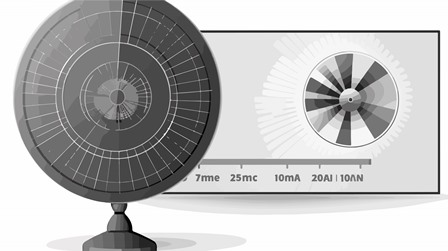Choosing the right kitchen exhaust fan size is crucial for ensuring proper ventilation, especially in regions like Kerala, where humid conditions prevail. A well-ventilated kitchen can significantly improve indoor air quality by reducing smoke, odors, and excess moisture, all of which can lead to mold growth and other issues. This article provides an in-depth guide on how to select the correct exhaust fan for your kitchen based on size, airflow capacity, and installation requirements.
Why Is Kitchen Exhaust Fan Sizing Important?
The size of a kitchen exhaust fan directly affects its efficiency in removing air pollutants. An underpowered fan may not adequately ventilate the kitchen, while an oversized one can be noisy and inefficient. By choosing the right size, homeowners in Kerala can ensure that their kitchens remain fresh and free from contaminants.
Key Factors to Consider for Kitchen Exhaust Fans in Kerala
- Kitchen Size: The volume of the kitchen is the primary determinant for selecting the right exhaust fan size. Larger kitchens require fans with higher airflow capacity.
- Humidity Levels: Kerala’s humid climate demands exhaust fans that can also handle moisture effectively.
- Cooking Style: Kitchens that handle heavy frying or grilling require more powerful exhaust systems to eliminate grease and smoke.
- Fan Location: Installing the exhaust fan in the right position is essential for its performance. Ideally, it should be placed directly above the cooking range to capture fumes efficiently.
How to Calculate the Right Exhaust Fan Size for Your Kitchen
Airflow Measurement in CFM (Cubic Feet per Minute)
The airflow of an exhaust fan is measured in CFM (Cubic Feet per Minute), which represents the amount of air a fan can move in one minute. For efficient kitchen ventilation, the exhaust fan should replace the air in the kitchen about 15 times per hour. Here’s how you can calculate the CFM needed for your kitchen:
- Step 1: Measure the dimensions of your kitchen. Multiply the length, width, and height to calculate the total cubic footage.
- Step 2: Multiply the cubic footage by 15 (for 15 air changes per hour), then divide the result by 60 (to convert minutes into hours). This gives you the required CFM.
CFM Calculator
Choosing the Correct Size for Your Kitchen
After calculating the required CFM, refer to the following kitchen exhaust fan size chart to choose the right fan for your kitchen in Kerala:
| Kitchen Area (Square Feet) | Recommended CFM (Cubic Feet per Minute) |
|---|---|
| 50 – 100 sq. ft. | 100 – 150 CFM |
| 100 – 150 sq. ft. | 150 – 200 CFM |
| 150 – 200 sq. ft. | 200 – 300 CFM |
| 200 – 300 sq. ft. | 300 – 400 CFM |
| 300 – 400 sq. ft. | 400 – 500 CFM |
| 400 – 500 sq. ft. | 500 – 600 CFM |
| Over 500 sq. ft. | 600+ CFM |
Considerations for Kerala’s Climate
In regions with high humidity like Kerala, it’s important to choose an exhaust fan with built-in moisture control. Look for models that have:
- Humidity sensors to adjust the fan speed based on moisture levels.
- Rust-resistant materials to withstand humid conditions.
- Low noise levels, as some higher CFM models can be noisy.
Different Types of Kitchen Exhaust Fans
Wall-Mounted Exhaust Fans
These are among the most common types of kitchen exhaust fans, installed directly on the kitchen wall. They are ideal for kitchens with limited space and provide effective ventilation.
Ceiling-Mounted Exhaust Fans
Ceiling-mounted fans are typically used in larger kitchens and are often part of a central ventilation system. They offer a more streamlined look and are good for homes that may not have external wall access for a fan.
Window Exhaust Fans
Window exhaust fans are suitable for kitchens that have windows near the cooking area. These fans are easy to install and cost-effective, making them popular in many households in Kerala.
Range Hood Fans
Range hoods, or chimney hoods, are an excellent option for kitchens with heavy cooking. These systems are mounted above the stove and are highly effective at removing smoke, grease, and odors.
Installation Guidelines for Optimal Performance
To get the best performance from your kitchen exhaust fan, follow these installation tips:
- Positioning: Install the fan as close to the stove or cooking range as possible. This ensures maximum capture of smoke, steam, and grease.
- Duct Length: Keep the ductwork as short and straight as possible. Long ducts can reduce the efficiency of the exhaust fan.
- Proper Venting: Always vent the exhaust fan outside the home, not into the attic or crawl spaces, to prevent moisture buildup and mold growth.
- Maintenance: Regularly clean the exhaust fan blades and grills to maintain its efficiency and prevent dust buildup.
Energy Efficiency and Noise Considerations
When choosing a kitchen exhaust fan in Kerala, it’s important to consider energy efficiency. Look for fans with an Energy Star rating, as these consume less power while maintaining effective ventilation.
Additionally, noise can be a significant factor. Fans with higher CFM ratings tend to be noisier, so selecting a fan with a lower sone rating (a measure of sound) can enhance comfort. Typically, a fan with a sone rating below 2.0 is considered quiet.
Conclusion
Selecting the right kitchen exhaust fan for your home in Kerala is a matter of understanding your kitchen’s size, the local climate, and your cooking habits. By following the steps outlined in this guide, you can choose an exhaust fan that not only fits your kitchen perfectly but also enhances air quality and overall comfort. Proper ventilation is essential for a healthy kitchen environment, and investing in a suitable exhaust fan can make all the difference.







